“I don’t understand what you’re asking for”. The dreaded response that usually kills any joy when talking to any form of digital customer interaction. Avoid it by taking advantage of advanced conversational AI.
How advanced can cutting-edge conversational AI actually be? How much can it actually understand what a difficult user says, and what can be done to keep the conversation going? These are some of the questions every company should ask before deciding on how to automate customer interactions.
This article contains six examples of how boost.ai solves common natural language understanding (NLU) and natural language processing (NLP) challenges that can occur when customers interact with a company via a virtual agent).
1. Multiple intents in one question
When a customer asks for several things at the same time, such as different products, boost.ai’s conversational AI can easily distinguish between the multiple variables.
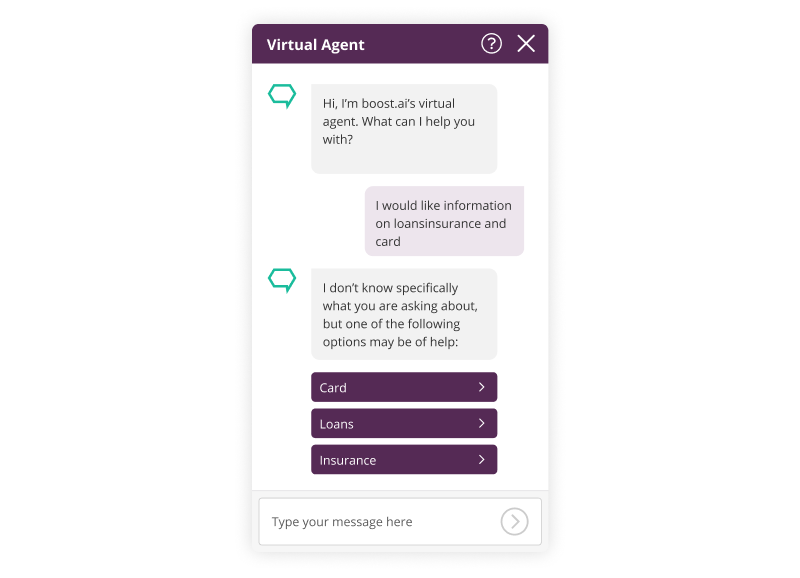
Here - in this grossly exaggerated example to showcase our technology’s ability - the AI is able to not only split the misspelled word “loansinsurance”, but also correctly identify the three key topics of the customer's input. It then automatically proceeds with presenting the customer with three distinct options, which will continue the natural flow of the conversation, as opposed to overwhelming the limited internal logic of a chatbot.
2. Assuming it understands context and has memory
In the event that a customer does not provide enough details in their initial query, the conversational AI is able to extrapolate from the request and probe for more information. The new information it then gains, combined with the original query, will then be used to provide a more complete answer.
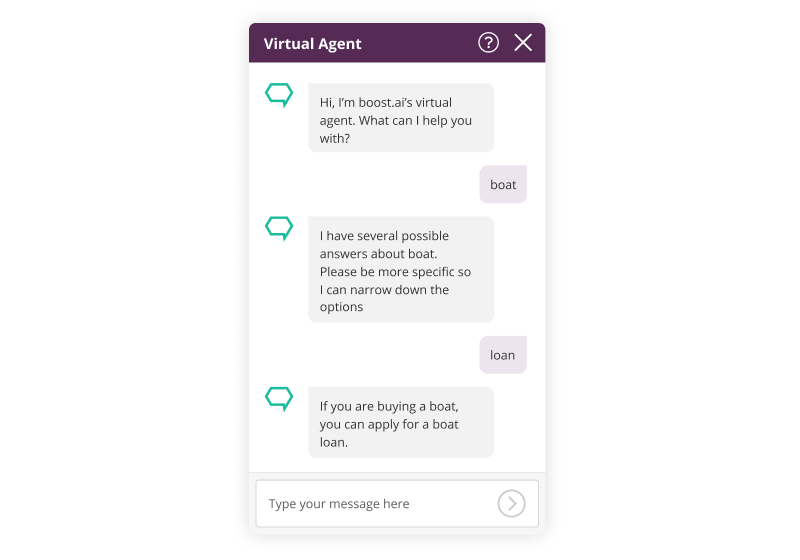
First, it understands that “boat” is something the customer wants to know more about, but it’s too vague. It asks for more details so it can narrow it down. Even though the second response is very limited, it’s still able to remember the previous input and understands that the customer is probably interested in purchasing a boat and provides relevant information on boat loans.
3. Misspellings in entity extraction
Spelling mistakes and typos are a natural part of interacting with a customer. Our conversational AI platform uses machine learning and spell correction to easily interpret misspelled messages from customers, even if their language is remarkably sub-par.
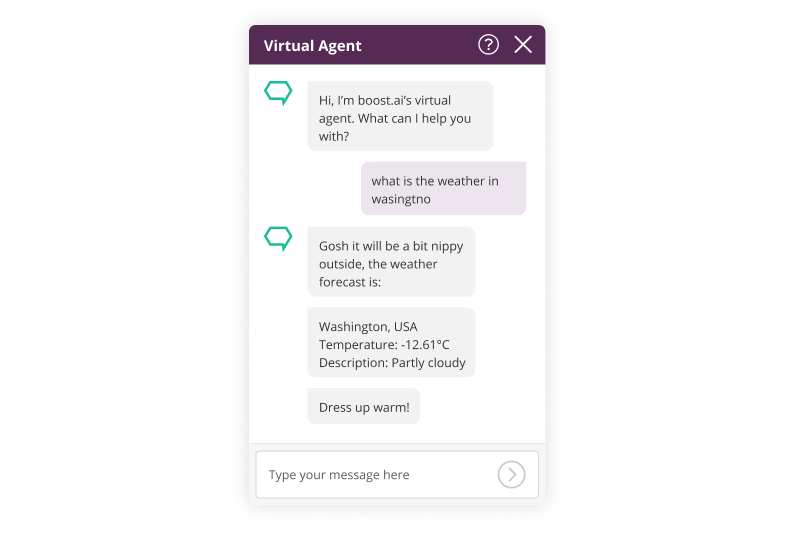
Spelling mistakes and typos are a natural part of interacting with a customer. Our conversational AI uses machine learning and spell correction to easily interpret misspelled messages from customers, even if their language is remarkably sub-par.
It can identify that a customer is making a request for a weather forecast, but the location (i.e. entity) is misspelled in this example. By using spell correction on the sentence, and approaching entity extraction with machine learning, it’s still able to understand the request and provide correct service.
4. Same word - different meaning
Expertly understanding language depends on the ability to distinguish the importance of different keywords in different sentences.
Take the following user queries, for example:
- How are you?
- How can I change my account?
In the first sentence, the ‘How’ is important, and the conversational AI understands that, letting the digital advisor respond correctly. In the second example, ‘How’ has little to no value and it understands that the user’s need to make changes to their account is the essence of the question.
Conversational AI can extrapolate which of the important words in any given sentence are most relevant to a user’s query and deliver the desired outcome with minimal confusion.
5. Keeping the conversation going
The GUI for conversational AI should give you the tools for deeper control over extract variables, and give you the ability to determine the flow of a conversation based on user input - which you can then customize to provide additional services.
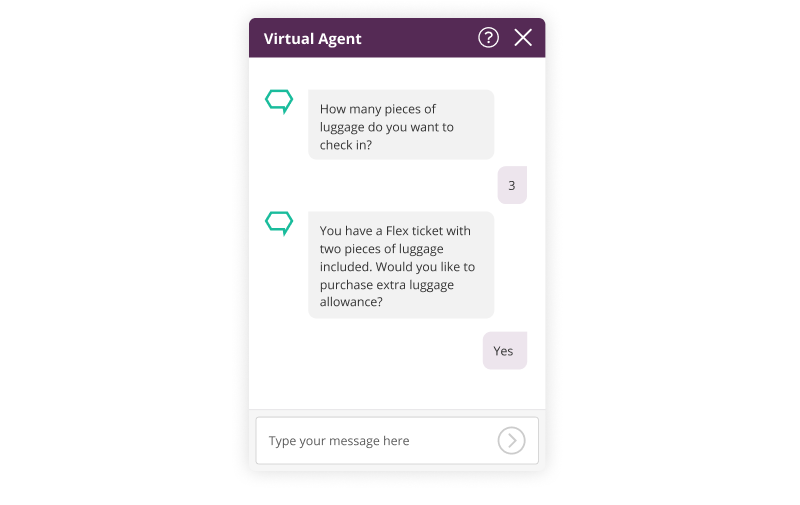
Here, the virtual travel agent is able to offer the customer the option to purchase additional baggage allowance by matching their input against information it holds about their ticket. Add-on sales and a feeling of proactive service for the customer provided in one swoop.
6. Tackling false positives
False positives arise when a customer asks something that the system should know but hasn't learned yet. Conversational AI can recognize pertinent segments of a discussion and provide help using its current knowledge, while also recognizing its limitations.
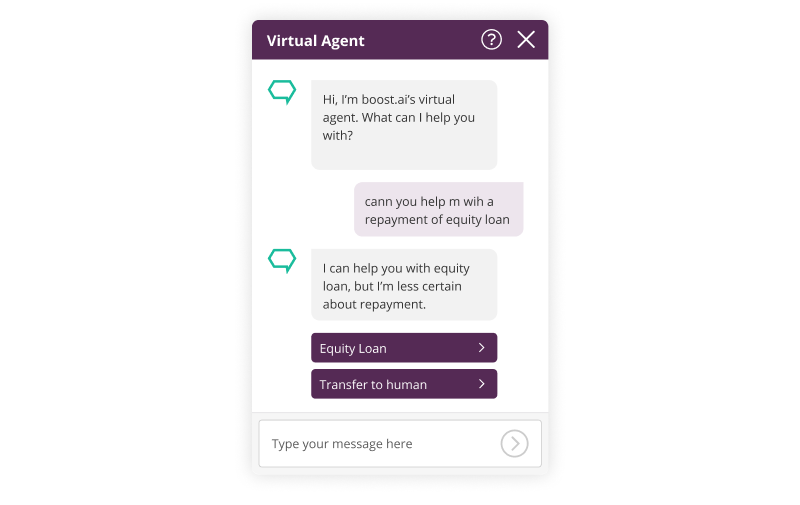
In this example, the AI understands that the customer requires assistance for an equity loan and provides a relevant link. At the same time, it understands that the user wants help with an unknown entity (repayment) and, while it is unable to assist, it correctly identifies it.
If you’re interested, please read our article: how does natural language understanding (nlu) work.
